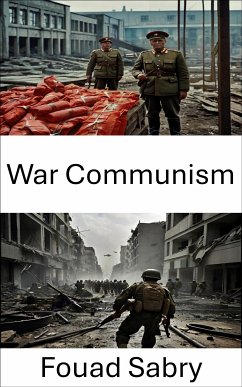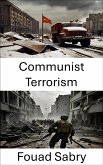What is War Communism
War communism, sometimes known as military communism, was the economic and political system that was in place in Soviet Russia during the Russian Civil War, which lasted from 1918 until 1921. During the month of June in 1918, communism was implemented by the Supreme Economic Council, which was also referred to as the Vesenkha. It came to an end on March 21, 1921, when the New Economic Policy was initiated, and it continued until 1928 during its entirety. Rather than being a unified political theory, the system has frequently been described as a straightforward authoritarian control exercised by the ruling and military castes in order to preserve power and control in the Soviet areas. This policy was supported by the Soviet propaganda, which asserted that the Bolsheviks had adopted it with the intention of ensuring that towns and the Red Army were continuously supplied with food and ammunition, despite the fact that new economic measures were required due to the circumstances.
How you will benefit
(I) Insights, and validations about the following topics:
Chapter 1: War communism
Chapter 2: Leninism
Chapter 3: Russian Revolution
Chapter 4: Russian Civil War
Chapter 5: History of Soviet Russia and the Soviet Union (1917-1927)
Chapter 6: Green armies
Chapter 7: Tambov Rebellion
Chapter 8: Red Terror
Chapter 9: History of the Communist Party of the Soviet Union
Chapter 10: Prodrazverstka
(II) Answering the public top questions about war communism.
Who this book is for
Professionals, undergraduate and graduate students, enthusiasts, hobbyists, and those who want to go beyond basic knowledge or information for any kind of War Communism.
War communism, sometimes known as military communism, was the economic and political system that was in place in Soviet Russia during the Russian Civil War, which lasted from 1918 until 1921. During the month of June in 1918, communism was implemented by the Supreme Economic Council, which was also referred to as the Vesenkha. It came to an end on March 21, 1921, when the New Economic Policy was initiated, and it continued until 1928 during its entirety. Rather than being a unified political theory, the system has frequently been described as a straightforward authoritarian control exercised by the ruling and military castes in order to preserve power and control in the Soviet areas. This policy was supported by the Soviet propaganda, which asserted that the Bolsheviks had adopted it with the intention of ensuring that towns and the Red Army were continuously supplied with food and ammunition, despite the fact that new economic measures were required due to the circumstances.
How you will benefit
(I) Insights, and validations about the following topics:
Chapter 1: War communism
Chapter 2: Leninism
Chapter 3: Russian Revolution
Chapter 4: Russian Civil War
Chapter 5: History of Soviet Russia and the Soviet Union (1917-1927)
Chapter 6: Green armies
Chapter 7: Tambov Rebellion
Chapter 8: Red Terror
Chapter 9: History of the Communist Party of the Soviet Union
Chapter 10: Prodrazverstka
(II) Answering the public top questions about war communism.
Who this book is for
Professionals, undergraduate and graduate students, enthusiasts, hobbyists, and those who want to go beyond basic knowledge or information for any kind of War Communism.








